Monacor HSE-40/SK Handleiding
Bekijk gratis de handleiding van Monacor HSE-40/SK (2 pagina’s), behorend tot de categorie Microfoon. Deze gids werd als nuttig beoordeeld door 23 mensen en kreeg gemiddeld 3.7 sterren uit 12 reviews. Heb je een vraag over Monacor HSE-40/SK of wil je andere gebruikers van dit product iets vragen? Stel een vraag
Pagina 1/2

ELECTRONICS FOR SPECIALISTS ELECTRONICS FOR SPECIALISTS ELECTRONICS FOR SPECIALISTS ELECTRONICS FOR SPECIALISTS ELECTRONICS FOR SPECIALISTS ELECTRONICS
HSE-40/SK
Bestell-Nr. • Order No. 23.6380
MONACOR INTERNATIONAL GmbH & Co. KG • Zum Falsch 36 • 28307 Bremen • Germany
Copyright© by MONACOR INTERNATIONAL. All rights reserved. A-1559.99.03.03.2018
2
3 1
2k2
Ohrbügelmikrofon
Diese Bedienungsanleitung richtet sich an Benut-
zer ohne besondere Fachkenntnisse. Bitte lesen
Sie die Anleitung vor dem Betrieb gründlich durch
und heben Sie sie für ein späteres Nachlesen auf.
1 Einsatzmöglichkeiten
Dieses hautfarbene Ohrbügelmikrofon ist für den Be-
trieb mit einem Taschensender eines drahtlosen Audio-
Übertragungssystems vorgesehen (z. B. ein Taschen-
sender TXS-...HSE mit 3-poligem Mini-XLR-Anschluss).
Es eignet sich damit optimal für Gesangs- und Sprach-
anwendungen, bei denen ein unauffälliges Mikrofon
gefordert ist, das Bewegungsfreiheit bietet, z. B. bei
Theateraufführungen.
Alternativ zum Betrieb mit einem Taschensender
lässt sich das Mikrofon auch über einen Speiseadapter
(z.B. EMA-1), der die Mikrofonversorgungsspannung
bereitstellt, mit einem Audiogerät, z. B. Mischpult, ver-
binden.
2 Wichtige Hinweise für den Gebrauch
Das Mikrofon entspricht allen relevanten Richtlinien der
EU und ist deshalb mit gekennzeichnet.
•
Das Mikrofon ist nur zur Verwendung im Innenbe-
reich geeignet. Schützen Sie es vor Feuchtigkeit und
Hitze (zulässiger Einsatztemperaturbereich 0 – 40 °C).
•
Verwenden Sie für die Reinigung nur ein trockenes,
weiches Tuch, niemals Chemikalien oder Wasser.
•
Wird das Mikrofon zweckentfremdet, falsch ange-
schlossen oder nicht fachgerecht repariert, kann
keine Haftung für daraus resultierende Sach- oder
Personenschäden und keine Garantie für das Mikro-
fon übernommen werden.
Soll das Mikrofon endgültig aus dem Betrieb
genommen werden, übergeben Sie es zur
umweltgerechten Entsorgung einem örtli-
chen Recyclingbetrieb.
3 Inbetriebnahme
Den beiliegenden Schaumstoff-Poppschutz über das
Mikrofon ziehen. Zum Anbringen des Ohrbügels am
linken Ohr das elastische Band nach hinten ziehen,
so dass der Bügel um die Ohrmuschel gelegt werden
kann. Für einen sicheren Sitz sollte die Ohrläppchen-
stütze hinten am Ohrläppchen anliegen.
Das Mikrofon an den Eingang des Taschensenders
anschließen oder über einen Speiseadapter mit einem
Mikrofoneingang des Audiogeräts verbinden.
4 Technische Daten
Typ: . . . . . . . . . . . . . . . . Back-Elektret
Richtcharakteristik: . . . . Kugel
Frequenzbereich: . . . . . 20 – 20 000 Hz
Impedanz: . . . . . . . . . . . 2 kΩ
Empfindlichkeit: . . . . . . 7,9 mV/ Pa bei 1 kHz
Maximaler Schalldruck: . 130 dB
Stromversorgung: . . . . . ⎓ 1,5 – 9 V über Taschen-
sender oder Speiseadapter
Gewicht: . . . . . . . . . . . . 15 g
Anschluss: . . . . . . . . . . . Mini-XLR, 3-polig
Kontaktbelegung: . . . . 1 = Masse, 2 = Audiosignal,
3 = Stromversorgung
Änderungen vorbehalten.
Earband Microphone
These operating instructions are intended for users
without any specific technical knowledge. Please
read the instructions carefully prior to operating
the microphone and keep them for later reference.
1 Applications
This skin-coloured earband microphone is designed to
be used in combination with a pocket transmitter of a
wireless audio transmission system (e. g. a pocket trans-
mitter TXS-…HSE with 3-pole mini XLR connection).
It is ideally suited for vocal sound and speech applica-
tions that require inconspicuous microphones offering
much freedom of movement, e. g. for theatre perfor-
mances.
As an alternative to the operation with a pocket trans-
mitter, the microphone may be connected to an audio
unit, e. g. mixer, by means of a power supply adapter
(e. g. EMA-1) that provides the microphone with power.
2 Important Notes
The microphone corresponds to all relevant directives
of the EU and is therefore marked with .
•
The microphone is suitable for indoor use only. Pro-
tect it against humidity and heat (admissible ambient
temperature range: 0 – 40 °C).
•
For cleaning only use a dry, soft cloth; never use
water or chemicals.
•
No guarantee claims for the microphone and no lia-
bility for any resulting personal damage or material
damage will be accepted if the microphone is used
for other purposes than originally intended, if it is
not correctly connected, or if it is not repaired in an
expert way.
If the microphone is to be put out of oper-
ation definitively, take it to a local recycling
plant for a disposal which is not harmful to
the environment.
3 Setting into Operation
Place the foam pop protection supplied onto the micro-
phone. Put the earband on your left ear: Pull back the
elastic band so that you can put the earband around
your auricle. To ensure a tight fit of the earband, the
earlobe support should be behind your earlobe.
Connect the microphone to the input of the pocket
transmitter or connect it to a microphone input of the
audio unit, using a power supply adapter.
4 Specifications
Type : . . . . . . . . . . . . . back electret
Pick-up characteristic: omnidirectional
Frequency range: . . . 20 – 20 000 Hz
Impedance: . . . . . . . . 2 kΩ
Sensitivity: . . . . . . . . . 7.9 mV/ Pa at 1 kHz
Maximum SPL: . . . . . 130 dB
Power supply: . . . . . . ⎓ 1.5 – 9 V via pocket transmit-
ter or power supply adapter
Weight: . . . . . . . . . . 15 g
Connection: . . . . . . . mini XLR, 3 poles
Pin configuration: 1 = ground, 2 = audio signal, . .
3 = power supply
Subject to technical modification.
Deutsch
English
Français
Microphone oreillette
Cette notice s‘adresse aux utilisateurs sans con-
naissances techniques particulières. Veuillez lire
la présente notice avec attention avant le fonc-
tionnement et conservez-la pour pouvoir vous y
reporter ultérieurement.
1 Possibilités d’utilisation
Ce microphone oreillette de couleur chair est conçu
pour un fonctionnement avec un émetteur de poche
d’un système de transmission audio sans fil (p. ex. un
émetteur de poche TXS-…HSE avec mini XLR 3 pôles). Il
est ainsi adapté de manière optimale pour des applica-
tions de chant et de discours où un microphone discret
est nécessaire, tout en procurant une liberté de mouve-
ments, p. ex. pour des représentations théâtrales.
A la place du fonctionnement avec un émetteur
de poche, le microphone peut être relié à un appareil
audio, p. ex. table de mixage, via un adaptateur d’ali-
mentation (p. ex. EMA-1) qui met à disposition l’ali-
mentation pour le microphone.
2 Conseils importants d’utilisation
Le microphone répond à toutes les directives nécessaires
de l’Union européenne et porte donc le symbole .
•
Le microphone n’est conçu que pour une utilisation
en intérieur. Protégez-le de l’humidité et de la chaleur
(température ambiante admissible 0 – 40 °C).
•
Pour le nettoyage, utilisez un chiffon sec et doux, en
aucun cas de produits chimiques ou d’eau.
•
Nous déclinons toute responsabilité en cas de dom-
mages corporels ou matériels résultants si le micro-
phone est utilisé dans un but autre que celui pour
lequel il a été conçu, s’il n’est pas correctement bran-
ché ou réparé par une personne habilitée ; en outre,
tout droit à la garantie deviendrait caduque.
Lorsque le microphone est définitivement
retiré du service, vous devez le déposer dans
une usine de recyclage adaptée pour contri-
buer à son élimination non polluante.
3 Fonctionnement
Placez la bonnette anti-pop en mousse livrée sur le
microphone. Pour placer l’oreillette derrière votre oreille
gauche, tirez l’élastique vers l’arrière de telle sorte que
l’oreillette puisse être posée autour de l’oreille. Pour
une fixation sûre, il faut que le support du lobe de
l’oreille soit derrière votre lobe d’oreille.
Reliez le microphone à l’entrée de l’émetteur de
poche ou, via un adaptateur d’alimentation, à une
entrée microphone de l’appareil audio.
4 Caractéristiques techniques
Type : . . . . . . . . . . . . . . . . . . back-électret
Caractéristique : . . . . . . . . . . omnidirectionnel
Bande passante : . . . . . . . . . . 20 – 20 000 Hz
Impédance : . . . . . . . . . . . . . 2 kΩ
Sensibilité : . . . . . . . . . . . . . . 7,9 mV/ Pa à 1 kHz
Pression sonore maximale : . . 130 dB
Alimentation : . . . . . . . . . . . . ⎓ 1,5 – 9 V via émetteur
de poche ou adapta-
teur alimentation
Poids : . . . . . . . . . . . . . . . . . . 15 g
Branchement : . . . . . . . . . . . mini XLR 3 pôles
Configuration des contacts : 1 = masse,
2 = signal audio,
3 = alimentation
CARTONS ET EMBALLAGE
PAPIER À TRIER
Tout droit de modification réservé.

ELECTRONICS FOR SPECIALISTS ELECTRONICS FOR SPECIALISTS ELECTRONICS FOR SPECIALISTS ELECTRONICS FOR SPECIALISTS ELECTRONICS FOR SPECIALISTS ELECTRONICS
HSE-40/SK
Bestell-Nr. • Order No. 23.6380
MONACOR INTERNATIONAL GmbH & Co. KG • Zum Falsch 36 • 28307 Bremen • Germany
Copyright© by MONACOR INTERNATIONAL. All rights reserved. A-1559.99.03.03.2018
2
3 1
2k2
Micrófono de Oreja
Estas instrucciones de funcionamiento van dirigi-
das a usuarios sin ningún conocimiento técnico
específico. Lea atentamente las instrucciones
antes de utilizar el micrófono y guárdelas para
usos posteriores.
1 Aplicaciones
Este micrófono de oreja de color carne está diseñado
para utilizarse en combinación con un emisor de pe-
taca de un sistema de transmisión de audio inalámbrico
(p. ej. un emisor de petaca TXS-…HSE con conexión
mini XLR de 3 polos). Está diseñado especialmente para
sonido vocal y discursos que necesiten micrófonos dis-
cretos con mucha libertad de movimiento, p. ej. para
actuaciones en teatros.
Como alternativa para el funcionamiento con un
emisor de petaca, el micrófono se puede conectar a
un aparato de audio, p. ej. un mezclador, mediante un
adaptador de alimentación (p. ej. EMA-1) que suminis-
tre corriente al micrófono.
2 Notas Importantes
El micrófono cumple con todas las directivas relevantes
de la UE y por lo tanto está marcado con el símbolo .
•
El micrófono está adecuado sólo para utilizarlo en
interiores. Protéjalo de la humedad y del calor (tem-
peratura ambiente admisible: 0 – 40 °C).
•
Utilice sólo un paño suave y seco para la limpieza; no
utilice nunca ni agua ni productos químicos.
•
No podrá reclamarse garantía o responsabilidad
alguna por cualquier daño personal o material re-
sultante si el micrófono se utiliza para otros fines
diferentes a los originalmente concebidos, si no se
conecta adecuadamente o no se repara por expertos.
Si va a poner el micrófono definitivamente
fuera de servicio, llévelo a la planta de reci-
claje más cercana para que su eliminación no
sea perjudicial para el medioambiente.
3 Puesta en Marcha
Coloque la espuma de protección entregada en el
micrófono. Coloque la orejera en la oreja izquierda: Tire
de la banda elástica para que pueda colocar la orejera
alrededor de su aurícula. Para asegurar un encaje firme
de la orejera, el soporte del lóbulo debería estar detrás
de su lóbulo.
Conecte el micrófono a la entrada del emisor de pe-
taca o conéctelo a la entrada de micrófono del aparato
de audio, utilizando un adaptador de alimentación.
4 Especificaciones
Tipo: . . . . . . . . . . . . . . . . Back electret
Captación: . . . . . . . . . . . Omnidireccional
Rango de frecuencias: . . . 20 – 20 000 Hz
Impedancia: . . . . . . . . . . 2 kΩ
Sensibilidad: . . . . . . . . . . 7,9 mV/ Pa a 1 kHz
SPL máximo: . . . . . . . . . . 130 dB
Alimentación: . . . . . . . . . ⎓ 1,5 – 9 V mediante emisor
de petaca o adaptador de
alimentación
Peso: . . . . . . . . . . . . . . . . 15 g
Conexión: . . . . . . . . . . . . Mini XLR, 3 polos
Configuración de pines: 1 = masa, 2 = señal de
audio, 3 = alimentación
Sujeto a modificaciones técnicas.
Microfono archetto
Queste istruzioni sono rivolte all’utente senza
conoscenze tecniche specifiche. Vi preghiamo di
leggerle attentamente prima della messa in fun-
zione e di conservarle per un uso futuro.
1 Possibilità d‘impiego
Questo microfono archetto color pelle è previsto per
l‘uso con il trasmettitore tascabile di un sistema wireless
di trasmissione audio (p. es. un trasmettitore tascabile
TXS-...HSE con contatto mini XLR a 3 poli). Pertanto è
adatto in modo ottimale per applicazioni di canto e di
voce parlata che richiedono un microfono non vistoso
che comunque offra della libertà di movimento, per
esempio durante rappresentazioni teatrali.
In alternativa al funzionamento con un trasmetti-
tore tascabile, il microfono può essere collegato anche
con un apparecchio audio, p. es. un mixer, per mezzo
di un adattatore di alimentazione (p. es. EMA-1), che
mette a disposizione l‘alimentazione del microfono.
2 Avvertenze importanti per l‘uso
Il microfono è conforme a tutte le direttive rilevanti
dell’UE e pertanto porta la sigla .
•
Il microfono è adatto solo per l’uso all’interno di lo-
cali. Proteggerlo dall‘umidità e dal calore (tempera-
tura d’impiego ammessa fra 0 e 40 °C).
•
Per la pulizia usare solo un panno morbido, asciutto;
non impiegare mai acqua o prodotti chimici.
•
Nel caso d’uso improprio, di collegamenti sbagliati o
di riparazione non a regola d’arte del microfono, non
si assume nessuna responsabilità per eventuali danni
consequenziali a persone o a cose e non si assume
nessuna garanzia per il microfono.
Se si desidera eliminare il microfono definiti-
vamente, consegnarlo per lo smaltimento ad
un’istituzione locale per il riciclaggio.
3 Messa in funzione
Coprire il microfono con la cuffia antivento di materiale
espanso in dotazione. Per sistemare l‘archetto, sull‘o-
recchio sinistro tirare indietro il nastro elastico in modo
che l‘archetto possa essere messo intorno al padiglione.
Per una tenuta sicura, il supporto del lobo dovrebbe
trovarsi dietro al lobo.
Collegare il microfono con l‘ingresso del trasmet-
titore tascabile oppure collegarlo con l‘ingresso micro-
fono di un apparecchio audio servendosi di un adatta-
tore d‘alimentazione.
4 Dati tecnici
Tipo: . . . . . . . . . . . . . . . . back-electret
Caratteristica direzionale: onnidirezionale
Gamma di frequenze: . . . 20 – 20 000 Hz
Impedenza: . . . . . . . . . . . 2 kΩ
Sensibilità: . . . . . . . . . . . 7,9 mV/ Pa con 1 kHz
Pressione sonora max.: . . 130 dB
Alimentazione: . . . . . . . . ⎓ 1,5 – 9 V tramite trasmet-
titore tascabile o adattatore
d‘alimentazione
Peso: . . . . . . . . . . . . . . . . 15 g
Contatto: . . . . . . . . . . . . XLR mini, 3 poli
Piedinatura: . . . . . . . . . 1 = massa, 2 = segnale
audio, 3 = alimentazione
Con riserva di modifiche tecniche.
Mikrofon nagłowny
Niniejsza instrukcja przeznaczona jest dla użyt-
kowników, którzy nie posiadają wiedzy i do-
świadczenia technicznego. Przed rozpoczęciem
użytkowania proszę zapoznać się z instrukcją, a
następnie zachować ją do wglądu.
1 Zastosowanie
Mikrofon nagłowny w kolorze skóry przystosowany
jest do współpracy z nadajnikiem kieszonkowym bez-
przewodowego systemu transmisji audio (np. nadaj-
nikiem TXS-…HSE, wyposażonym w 3-pinowe złącze
miniXLR). Przeznaczony jest do zastosowań muzycz-
nych oraz konferencyjnych, wymagających dużej swo-
body ruchu np. przy występach na scenie teatralnej.
Alternatywnie, możliwe jest podłączenie mikro-
fonu do wejścia w urządzeniu audio np. mikserze.
Wymagany do tego jest adapter z zasilaniem phantom
(np.EMA-1).
2 Środki bezpieczeństwa
Mikrofon spełnia wszystkie wymagania norm UE i dla-
tego został oznaczony symbolem .
•
Mikrofon przeznaczony jest do użytku jedynie we-
wnątrz pomieszczeń. Należy chronić go przed dzia-
łaniem wilgoci oraz wysokiej temperatury (dopusz-
czalna temperatura otoczenia: 0 – 40 °C).
•
Do czyszczenia urządzenia należy używać suchej,
miękkiej tkaniny. Nie stosować wody, ani chemicz-
nych środków czyszczących.
•
Producent ani dostawca nie ponoszą odpowiedzial-
ności za wynikłe szkody (uszkodzenie sprzętu lub ob-
rażenia użytkownika), jeśli urządzenie było używane
niezgodnie z przeznaczeniem, nieprawidłowo pod-
łączone bądź poddane nieautoryzowanej naprawie.
Jeśli mikrofon nie będzie już więcej używany,
wskazane jest przekazanie go do miejsca uty-
lizacji odpadów, aby został zniszczony bez
szkody dla środowiska.
3 Przygotowanie do pracy
Założyć piankowy wiatrochron na wkładkę mikro-
fonową. Założyć mikrofon na lewe ucho: odciągnąć
gumowy pasek i założyć uchwyt tak, aby obejmował
małżowinę ucha od zewnątrz.
Podłączyć mikrofon do wejścia w nadajniku kie-
szonkowym lub do wejścia mikrofonowego w urzą-
dzeniu audio – poprzez adapter z zasilaniem.
4 Specyfikacja
Typ: . . . . . . . . . . . . . . . . . . . . . back electret
Charakterystyka kierunkowa: . dookólna
Pasmo przenoszenia: . . . . . . . . 20 – 20 000 Hz
Impedancja: . . . . . . . . . . . . . . 2 kΩ
Czułość: . . . . . . . . . . . . . . . . . przy 1 kHz7,9 mV/ Pa
Max poziom SPL: . . . . . . . . . . 130 dB
Zasilanie: . . . . . . . . . . . . . . . . . ⎓ 1,5 – 9 V z nadajnika
kieszonkowego lub
adaptera zasilania
Waga: . . . . . . . . . . . . . . . . . . . 15 g
Złącze: . . . . . . . . . . . . . . . . . . mini XLR, 3-pinowy
Konfiguracja pinów: . . . . . . . 1 = masa, 2 = sygnał
audio, 3 = zasilanie
Z zastrzeżeniem możliwości zmian.
Italiano
Español
Polski
Product specificaties
| Merk: | Monacor |
| Categorie: | Microfoon |
| Model: | HSE-40/SK |
Heb je hulp nodig?
Als je hulp nodig hebt met Monacor HSE-40/SK stel dan hieronder een vraag en andere gebruikers zullen je antwoorden
Handleiding Microfoon Monacor

22 Juni 2023

19 Juni 2023

19 Juni 2023

19 Juni 2023

18 Juni 2023

16 Juni 2023

15 Juni 2023

11 Juni 2023

11 Juni 2023

11 Juni 2023
Handleiding Microfoon
- MOOU
- BOYA
- Sandberg
- Deity
- Klark Teknik
- Steren
- Saramonic
- DB Technologies
- Fun Generation
- GVM
- Antelope
- Bose
- Kalley
- Boss
- Creative
Nieuwste handleidingen voor Microfoon
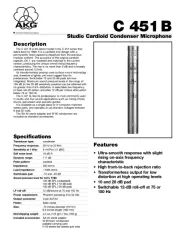
2 Augustus 2025
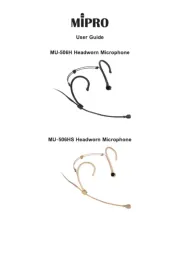
29 Juli 2025
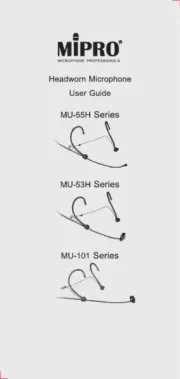
29 Juli 2025
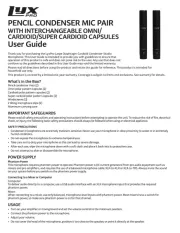
29 Juli 2025

29 Juli 2025
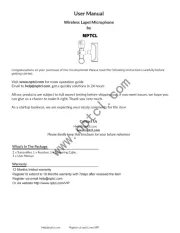
28 Juli 2025
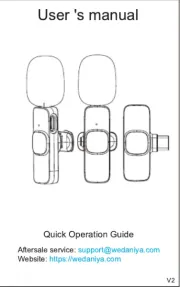
28 Juli 2025
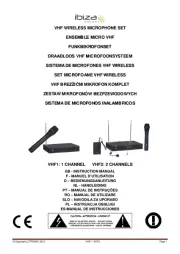
28 Juli 2025
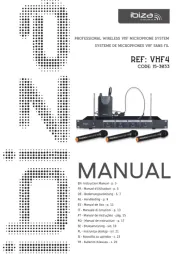
28 Juli 2025
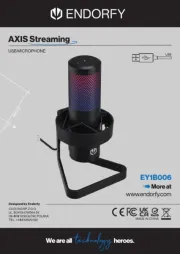
23 Juli 2025